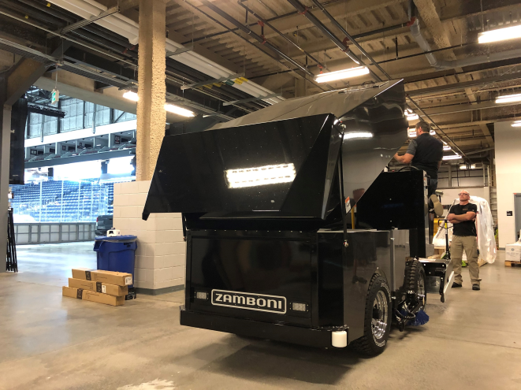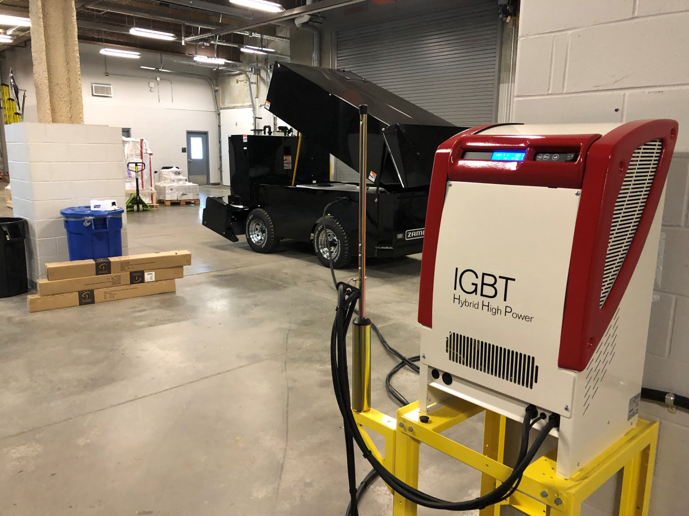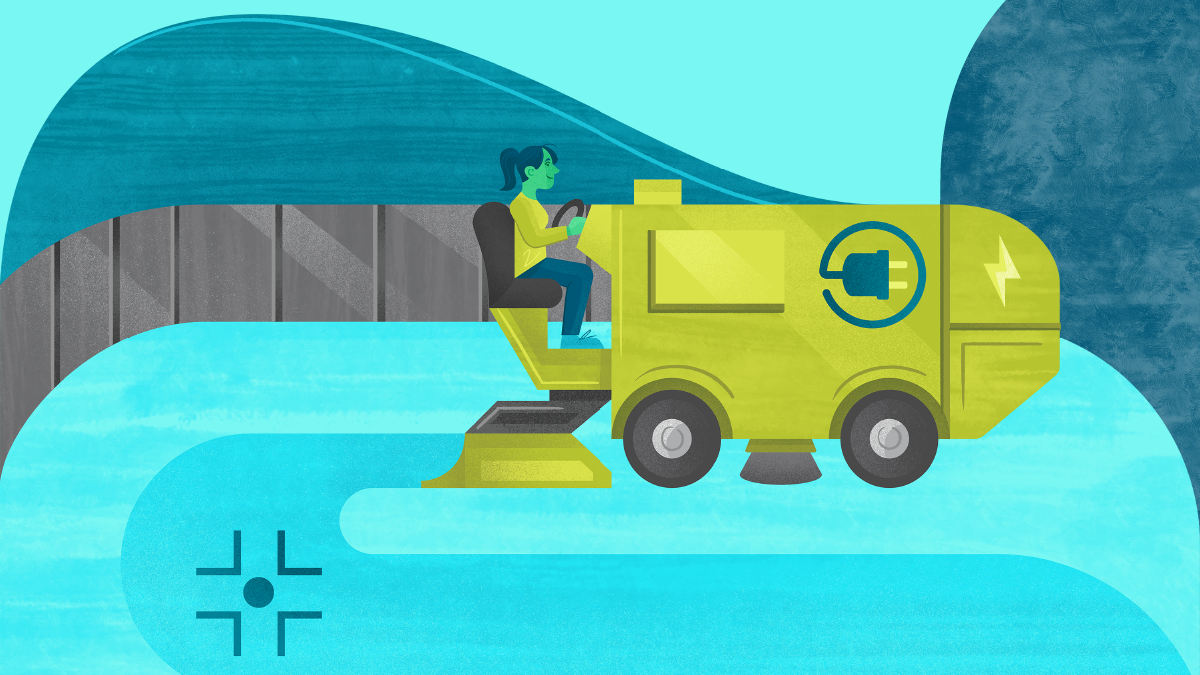It’s hard to think about ice rinks without thinking about hockey, figure skating, and of course, ice resurfacers! Resurfacing the ice is a crucial part of any arena maintenance plan and can be an expensive endeavor.
Traditional ice resurfacers are expensive because of the significant fuel and maintenance costs over the useful life of the vehicle. They also pose a health risk from exposure to the toxic emissions (such as carbon monoxide and nitrous dioxide) released in an enclosed arena during a routine ice resurfacing.
Luckily, you can replace your fossil fueled ice resurfacers with an electric solution.
Within the past decade, electric vehicle technology continues to improve; allowing operation costs to be substantially reduced and the impact on the environment mitigated. Many municipalities across Alberta are understandably excited to procure these types of vehicles with the intent of producing significant savings.

The Action Centre recently spoke with Justin Brunelle, Fleet Services Manager at the Canalta Centre, who acquired two new electric Zamboni 450s with the City of Medicine Hat.
Here is what Justin had to say:
Why did your municipality choose to purchase an electric ice resurfacer?
The City of Medicine Hat chose to purchase an electric ice resurfacer for a number of reasons. Firstly, we are expecting to see significant cost reductions.
For fuel costs, we are estimating an 80% reduction compared to the gasoline units they replaced. In addition, we are expecting to see a 30% savings in the cost of maintenance. There are also a number of operational efficiencies that will be gained, leading to further cost reductions.
By switching to electric, specifically units with a lithium-ion battery, we will be eliminating any operational emissions, leading to a reduction in environmental impact, as well as health and safety improvements for both staff and patrons.
What was the reaction from the staff?
The response from staff has been very positive. They recognize that there may need to be some changes to their processes, but they do see this as an opportunity to find efficiencies.
Have the performance, maintenance, and costs associated with the ice rink changed since you started using your new electric ice resurfacer?
We are just finishing the commissioning of the two units and putting them into services, however we do expect to see reductions in cost, improvement in functionality, and improved air quality through the reduction of GHGs.
We will also see a reduction in environmental impact as a result of motor oil no longer needing to be changed and disposed of. In regard to battery life, preliminary operation suggests that the batteries will be more than adequate to meet the day to day needs of the operations now, and in the future when battery degradation is factored in.

Is your municipality considering the purchase of more electric vehicles in addition to these ice resurfacers?
To date, we have purchased lifting equipment such as scissor lifts, forklifts, and small utility vehicles as electrics rather than traditional fuels.
Currently, the City of Medicine Hat is looking at other opportunities to purchase another electric ice resurfacer in the near future, as well as [battery] electric vehicles to replace small and mid sized SUVs and passenger cars.
We have also begun exploring the feasibility of replacing pick-up trucks with electric vehicles and plug-in electric vehicles when they become available.
Would you recommend that other municipalities upgrade to an electric ice resurfacer?
I would highly recommend other municipalities considering the switch to an electric ice resurfacer when it is time to replace their current unit.
Take advantage of this new wave of EV technology with rebates for electric vehicles, charging stations, and feasibility studies through the Electric Vehicles for Municipalities Program.


You must be logged in to post a comment.